Leather Baggers Shootout: Cruisers for the Open Road + Video

Harley-Davidson Heritage Softail Classic vs. Indian Chief Vintage vs. Triumph Thunderbird LT vs. Victory Cross Roads Classic
Cruisers have always been about the essence of motorcycling, stripping motorcycles down to their core: an engine, a seat, a pair of wheels and little else. Naturally, when thinking about the essential elements of motorcycling, thoughts of the open road come to mind. The dream of packing just what you need on your bike and pointing the front wheel towards destinations unknown looms large in many cruiser riders’ hearts.
The leather baggers segment of cruisers gives the purest physical form to that dream, presumably offering only what you need to live out that simple dream shared by all motorcyclists. When Triumph introduced the Thunderbird LT, we knew it was time to take a close look at these motorcycles since there were now a pair of new members to the category.
If you were wondering what it takes to be part of the leather baggers set, well, the requirements are few. First, we decided that the shootout should be Big Twins only – although there are some nice options available at lower displacements. Not surprisingly, the bikes also need be purpose-built baggers with leather saddlebags that can tote road-trip necessities. How those saddlebags are constructed isn’t universal, however. Two of our entries have plastic-lined luggage with leather on the exterior while two depend on the thickness of the leather to maintain the bags’ shape.
The other requirement of the category is a fork-mounted windshield. Being cruisers, the windshields are all variations on the classic, flat cop-style. No batwing fairings here, that’s too close to actual tourers with their frame-mounted fairings. However, bonus points are given for easy windshield removability since they block an awful lot of air when riding around town.
Astute readers will notice that our collection of leather baggers is incomplete. Unfortunately, Yamaha was unable to provide us with a Star Stratoliner S, which is regrettable since the big Star would have been a worthy competitor.
So, after we gathered together the Harley-Davidson Heritage Softail Classic, the Indian Chief Vintage, the Triumph Thunderbird LT, and the Victory Cross Roads Classic, we came up with a destination, mounted up our quartet of leather baggers, and set out in search of the open road.
Harley-Davidson Heritage Softail Classic
In this gathering of leather bagged cruisers, we need to begin by stating the obvious: We wouldn’t be here testing this group of motorcycles if it weren’t for this motorcycle. Despite what we say about the comparative functionality of this quartet of Big Twins, the Heritage Softail Classic will most likely outsell them all. The brand recognition of and loyalty to Harley-Davidson is, frankly, what the other manufacturers aspire to – which is why you will see them sponsoring events at the major rallies. Additionally, cruiser manufacturers have to find a way to differentiate themselves while following a trail blazed by Harley.
2014 Harley-Davidson FXDF Fat Bob Review
Being the patriarch of the group, I guess it shouldn’t come as a surprise that the Softail feels a bit dated. Returning to the MO fold, John “Bridge Burner” Burns sums the feeling up succinctly, saying that the Harley “just feels old-fashioned and slightly rickety among the others, but that’s part of the appeal for people who love them.”
Part of this sentiment could come from the fact that the Twin Cam 103B feels down on power compared to the other three engines here. A contributing factor could be that, since we’ve sampled the Project Rushmore improved engines, the old Twin Cam feels like it is a generation behind in power delivery. “Power output of the TC103B is perfectly adequate for most uses, but it’s the weakling of this group and feels relatively anemic at altitude,” says analog-note-taking editor, Kevin Duke. Still, despite that disadvantage, Burns noted, “Surprisingly, the Harley has no trouble hanging with the Polaris Bros on backroads.”
| HP | Torque | |
|---|---|---|
| Chief | 74.2 hp @ 4500 rpm | 102.8 ft-lb. @ 3100 rpm |
| Cross Roads | 77.5 hp @ 4500 rpm | 88.9 ft-lb. @ 4250 rpm |
| Softail | 66.6 hp @ 5100 rpm | 88.3 ft-lb. @ 2800 rpm |
| Thunderbird | 69.4 hp @ 4800 rpm | 91.1 ft-lb. @ 2100 rpm |
This seemingly contradictory set of facts makes sense, when considering maneuverability. Simply put, on winding roads, the Softail struts its stuff, being the lightest, most responsive-steering bike here. While you may not associate the word nimble with this class of motorcycle, the word was tossed around quite frequently when describing the Heritage Softail. Without a hint of irony, Duke states, “The Softail’s agility is a revelation in this group. Credit its relatively skinny tires. It’s the easiest to maneuver at low speeds, and it banks quickly into corners at any speed.”
Revelation is an appropriate word. Where the other leather baggers required a firm hand to get the most out of them on a twisty road, the Harley felt positively eager to turn. Unfortunately, its floorboards touch down quite early and end the party prematurely. Yes, the floorboards do fold up a fair amount, but the hard parts still drag earlier than the other baggers.
While most of the editors felt that the Softail’s limited ground clearance shortchanged its backroads capability, I noted that the chassis wobbled in higher speed sweepers and felt that more ground clearance would have only highlighted the limitations of the chassis and suspension. As MO readers are probably familiar, we take issue with the minimal suspension travel with which Harley often saddles their bikes. The Softail is no exception.
The Heritage was the only one of our baggers that used a single disc on the front brake, and it showed. In fact, Roderick commented, “I don’t know if there’s enough power in the single front brake set-up to warrant its ABS technology.” In the dry, he’s probably right, but riders will be glad to have the ABS on tap in wet weather.
One area where the Softail excelled was the ergonomics for the the passenger. With the lowest passenger footpegs of the bunch, the co-rider’s knees were bent less than on the other bikes. Also, having a standard passenger backrest is a nice touch shared only with the Triumph.
An interesting feature of the Harley’s style that Duke noticed was how the handlebar’s mounting arrangement makes it look like it is an ape hanger. However, when compared to the Victory, the grips are at about the same height. The Softail’s triple clamp is lower, allowing for the ape hanger look without the performance penalty of having the grips higher than they need to be.
The leather bagger class has bumped up its level of competition in recent years, and the Heritage Softail Classic is now a bit behind the curve. Still, as noted at the beginning of this section, Harley will probably sell more of these bikes than the other three manufacturers combined. If the key requirement of your mount for the open road is a Harley badge on the tank, just shell out $18,349 ($19,079 Two-tone Color) and it’s yours.
– Evans Brasfield
Indian Chief Vintage
When it comes to leather baggers, Indian’s Chief Vintage is probably the leatheriest. The stock Chief Vintage comes attractively equipped with distressed tan leather seat (with removable fringe) and saddlebags (with non-removable fringe). And Indian’s accessory catalog offers lots more fringe to pile on, including leather fringe grips, floorboards, saddlebags and mud flaps.
| Bag Capacity | |
|---|---|
| Chief | 12.0 gallons |
| Cross Roads | 17.4 gallons |
| Softail | 9.5 gallons |
| Thunderbird | 15.0 gallons |
In terms of saddlebag capacity, though, the Chief’s bags, at six gallons per bag, are next to last – Harley being the least capacious at 4.75 gallons per bag. A boast the Chief’s bags can make that the others here cannot, is an incredibly easy quick-release system that, when put to use and the bags removed, reveals an attractive bag-less profile. The Victory has quarter-turn fasteners for its soft luggage, but you wouldn’t want to ride around without the bags – fuuuuugly!
2014 Indian Chief Classic Review
The Chief Vintage is easily the largest bike in this group: 835-pound curb weight, 68.1-inch wheelbase, 1819cc engine. Riding the bike makes us wonder if Polaris employed a relative of Andre the Giant to be their development rider. The bars are wide, but you’ll want the leverage they provide when slow maneuvering this land barge at anything under 15 mph.
“As a smaller person,” says Burns, “it’s just more cumbersome in low-speed maneuvers and feels like bringing my twin-inboard 31-foot Uniflite into the dock used to feel when there were a lot of people watching. Slightly intimidating.”
At speed, though, the Chief Vintage swooshes through sweepers like a motorcycle weighing substantially less. Even with its prodigious floorboards the Chief enjoys the second-best cornering clearance next to its mother company stablemate, Victory’s Cross Roads Classic.
It’s worth pointing out that Polaris, to better cope with the added weight of its fork-mounted fairing, tightened the Chieftain’s wheelbase, rake/trail compared to the Chief Vintage and standard Chief.
| Wheelbase | Rake/Trail | |
|---|---|---|
| Chieftain | 65.7 in. | 25°/5.9 in. |
| Chief Vintage/Chief | 68.1 in. | 29°/6.1 in. |
“It’s funny how much a bike’s character can change with a little thing like rake, but the difference in handling between the Chief and the Chieftain is amazing,” says Brasfield. “The lighter bike feels heavier and the heavier bike feels more agile. I know this doesn’t directly reflect the comparison here, but the difference is profound enough to note.”
Getting back to its size…
The Indian features a nicely integrated cruise control system that flawlessly works in conjunction with the bike’s R-b-W system. The problem lies with the reach to the buttons being such a stretch for a rider’s hands. You almost need a thumb with a third phalange to manipulate the cruise-control feature.
Indian Motorcycle Displays New Accessories And Apparel
Like all aspects of the Indian, the windscreen is ginormous. While it does provide excellent protection from the elements, it’s not without its drawbacks. Brasfield notes, “I’ve gotta say that I hate windshields that I can’t see over. I want an unobstructed view of the road – particularly in drizzle where it will build up on the screen. The same can be said of riding into early morning or late afternoon light. Unless the shield is spotless, it lights up, making it hard to see.”
For those wanting to purchase a Chief but are feeling intimidated by its dimensions, Indian offers a pull-back handlebar ($200) that’s 2 in. closer to the rider as well as a heated seat ($600) that’s 1 in. lower and places the rider 1 in. forward.
–Tom Roderick
Leather Baggers Specs | ||||
|---|---|---|---|---|
| Harley-Davidson Heritage Softail Classic | Indian Chief Vintage | Triumph Thunderbird LT | Victory Cross Roads Classic | |
| MSRP | $18,349 ($19,079 Two-tone Color) | $20,999 | $16,699 | $17,999 |
| Engine Type | 103.1 cu. in. (1690 cc) Air-cooled, Twin Cam 103B, 45 degree V-Twin | Thunder Stroke 111,air-cooled 49-degree V-Twin | 1699 cc liquid-cooled, DOHC, Parallel-Twin, 270º firing interval | 106 cu. in. (1731 cc) air/oil-cooled 50° V-Twin |
| Bore and Stroke | 98.5 mm x 111.3 mm | 101 mm x 113 mm | 107.1 mm x 94.3 mm | 101 mm x 108 mm |
| Fuel System | Electronic Sequential Port Fuel Injection (ESPFI), | Closed loop fuel injection, 54 mm throttle body | Multipoint sequential electronic fuel injection, progressive linkage on throttle | Electronic Fuel Injection with dual 45 mm throttle bodies |
| Compression Ratio | 9.6:1 | 9.5 : 1 | N/A | 9.4:1 |
| Valve Train | OHV – Pushrod, 2 valves per cylinder | OHV – Pushrod, 2 valves per cylinder | DOHC, 4 valves per cylinder | SOHC With 4 valves per cylinder, self-adjusting cam chains, hydraulic lifters |
| Peak HP | 65.1 hp @5000 RPM | 74.2 hp @4500 RPM | 69.4 hp @4800 RPM | 77.5 hp @5250 RPM |
| Peak Torque | 81.4 ft-lb. @3250 RPM | 102.8 ft-lb. @3100 RPM | 91.1 ft-lb. @2100 RPM | 88.9 ft-lb. @4250 RPM |
| Transmission | 6 speed | 6 speed | 6-speed, helical type 2nd – 6th | 6-speed overdrive, constant mesh |
| Final Drive | Belt | Belt | Belt | Belt |
| Front Suspension | 41 mm telescopic fork, TK in. travel | TK mm telescopic fork, 4.7 in. travel | Showa 47mm forks. 4.7 in. travel | Inverted cartridge 43 mm telescopic fork, 5.1 in. travel |
| Rear Suspension | hidden horizontally mounted dual shocks | Single shock, 3.7 in. travel | Showa chromed spring twin shocks with 5 position adjustable preload. 3.7 in. travel | Single, mono-tube gas, cast aluminum with constant-rate linkage, 4.7 in. travel, air adjustable |
| Front Brake | 292 mm disc, four-piston caliper | Dual floating disc, four-piston caliper, ABS | Twin 310 mm floating discs. Nissin four-piston fixed calipers, ABS | Dual 300 mm floating disc with four-piston calipers, ABS |
| Rear Brake | 292 mm disc, two-piston caliper | Single floating disc, two-piston caliper, ABS | Single 310 mm disc. Brembo 2-piston floating caliper, ABS | Single 300 mm floating disc with two-piston caliper |
| Front Tire | Dunlop MT90B16 72H | Dunlop American Elite 130/90B16 67H | 150/80 R16 | 130/70B18 Dunlop 491 Elite Ii |
| Rear Tire | Dunlop 150/80 R16 71H | Dunlop American Elite 180/65B16 81H | 180/70 R16 | 180/60R16 Dunlop Elite 3 |
| Rake/Trail | 31 degrees/5.8 in. | 29°/6.1 inches | 32°/5.9 in. | 29.0°/5.6 in. |
| Wheelbase | 64.5 in. | 68.1 inches | 63.5 in. | 65.7 inches |
| Seat Height | 27.1 inches | 26.0 inches | 27.5 in. | 26.3 inches |
| Curb Weight | 752 lb., fully fueled | 835 lbs, fully fueled | 836 lb., fully fueled | 805 lb., fully fueled |
| Fuel Capacity | 5 Gallons | 5.5 gallons | 5.8 gallons | 5.8 gallons |
| Storage Capacity | 4.75 gal. each, studded leather saddlebags | 6 gal. each, Removable leather saddlebags | 7.5-gal. each saddlebag, 2.5mm leather with full plastic linings. Waterproof accessory plastic liner included. | 8.7 gal. each, removable, plastic-lined leather saddlebags |
| Available Colors | Sand Pearl/Canyon Brown Pearl, Charcoal Pearl/ Brilliant Silver Pearl, Big Blue Pearl/Vivid Black, Midnight Pearl, Morocco Gold Pearl, Mysterious Red Sunglo, Vivid Black, | Thunder Black, Indian Motorcycle Red, Springfield Blue | Caspian Blue/Crystal White, Lava Red/Phantom Black | Two-Tone Bronze Mist/Khaki |
| Warranty | Two years, unlimited miles | Five years coverage that includes both a one year limited warranty and an extended service contract. Unlimited miles. | Two years, unlimited mileage | 12 months’ factory warranty, plus 12 months’ Victory Total Protection ESC |
| Last Major Revision | 2012 | 2013 | 2014 | 2010 |
| Extras | N/A | Standard cruise control | N/A | Standard cruise control |
Triumph Thunderbird LT
How to stand apart in the company of similarly styled and outfitted leather baggers? Simple. Power your model with a parallel-Twin instead of the ubiquitous V-Twin. Not only is Triumph’s 1699cc, DOHC parallel-Twin unique in its architecture, but also by being the only liquid-cooled motorcycle of the bunch.
The Triumph motor was my second favorite power plant behind Indian’s. When it came to freeway passing power and roll-on tests against the others, the T-Bird was without equal. It’s jugs are more willing to rev, but it doesn’t demand revs to make good power. The Twin is also a smooth operator and makes some really cool noises via its 270° firing order.
“Triumph’s motor is nice and stout, and likes to rev more than others; it’ll also cruise nice and smooth at 100 mph. Not that you would much, but it’s nice to know you can,” says Burns.
At 747 claimed curb pounds, the T-Bird is the lightest of these heavyweight cruisers, and you can feel it when navigating a twisty back road. The LT’s exceptional handling manners can also be attributed to the bike’s new frame which Brasfield addressed in his review of the Thunderbird LT and Commander. The only handling attribute we disliked was the T-Bird’s ranking as second-worst cornering clearance behind Harley.
2014 Triumph Thunderbird LT – First Ride Teaser
“Nice firm nearly sporty ride; shame you have to worry about digging in hard parts when you start picking up the pace,” says Burns. “More preload might’ve helped, but we couldn’t find the tool to adjust the shocks. (The Victory gives you an air pump and a gauge for its shock. Which needed no adjusting… how ironic…).”
And then there’s the Thunderbird’s seat; a wonderfully comfortable thing which, according to Burns, is “seemingly stuffed with the perfect amount of hummingbird feathers.”
“If other manufacturers aren’t studying this seat to see why it works so much better than theirs, then they’re not paying attention,” says Brasfield. One of the two bikes here to come equipped with standard backrest, and the only model with passenger floorboards, the T-Bird also won our choice for best passenger pillion. says Duke, “If you want to please your co-rider, put them on the LT.”
At 7.5 gallons per bag, the Triumph boasts the second-most volume behind the Victory’s 8.5 gallons per bag. And while the T-Bird’s saddlebags do not feature a quick-release system, they do come stock with removable waterproof liners – something none of the other leather baggers here provide.
| Average MPG | Theoretical Range | |
|---|---|---|
| Chief | 36.3 mpg | 210.7 miles |
| Cross Roads | 36.9 mpg | 214.0 miles |
| Softail | 34.6 mpg | 173.0 miles |
| Thunderbird | 38.7 mpg | 225.0 miles |
Although the T-Bird is outfitted with the smallest windscreen of the group, it provides protection from frontal wind blasts while allowing its rider to see over the top of the screen. “The Triumph is the only stock one that works for me, Burns noted. “On all these you need to saw the thing off to fit.” We noticed some turbulence but not as bad as that coming off the Harley’s windscreen. The great thing is, the windscreen features a toolless quick-release system.
“The removable windshield is the bees knees,” says Brasfield. “I want to pull in to motorcycle gathering places and show riders how cool it is. However, I wouldn’t do that until I’d bought the accessory lock.”
The Bird’s floorboards get a little tingly around 75 mph but its rubber-mounted bars distance a rider’s hands from vibration, the tradeoff being a slight loss of front-end feel and steering accuracy. You won’t find a cruise control button on the Thunderbird, but it is equipped with ABS – as are all the bikes in this contest.
At $16,699, the Thunderbird LT is the least expensive leather bagger competing in this shootout. Surprisingly, the LT turned out to be the quickest motorcycle – besting even the Indian Chief Vintage and its 120cc displacement advantage in top-gear roll-ons. Considering its speed, rider and passenger ergonomics, handling, removable windscreen and saddlebags/liners it’s easy to make a case for purchasing the T-Bird.
–Tom Roderick
Victory Cross Roads Classic
Since its inception in 1999, Victory has marched to the beat of a different drummer. Yes, the company’s chosen powerplant is a V-Twin, but Victorys have never aped another marque’s style. Rather, from the very beginning, the company’s cruisers have had a distinctive look that has been refined over the years to be like no other cruisers on the market.
2011 Victory Cross Roads Review
The $17,999 Cross Roads Classic in this shootout is no different. While having the basic light-duty touring components required of a leather bagger cruiser, the CRC is unique. Burns sums it up thusly: “I like its understated style, not too heavy on the chrome and look-at-me furbelows. The bike didn’t jump out at me when it was new, but the more I see it, the more I like its blend of classic curves and modern angles and creases. The aircraft-style gas filler is a nice hint this ain’t your typical barge, and no dumb tank-top instruments where you can’t see them easily either.”
Duke concurs on the instrument location, “It’s not as pretty, but it can be read without dropping your chin to look at gauges on a fuel tank.” However, he, along with most of the testers, felt that Victory scrimped on some of the details, particularly the wires and cables on the handlebar. One need only to look at the Indian’s tiller to see what refinement Polaris is capable of delivering.
The bags received high marks. Measuring in at a whopping 8.7 gallons of capacity each, their construction made them the closest to those on a hard bagger, even if their openings are rather slim. While the lids flipped open on hinges, they were still held closed by clips but, like all the baggers gathered here, are neither locking nor waterproof. Chromed tubular bag guards highlight the bags’ swoopy shape and offer tip-over protection. Although the bags pop off easily via quarter-turn fasteners, you’ll only want to do it to ease maintenance since the back of the bike with its fixed bag guards looks horrible without the bags.
Handling was another area where the CRC outshone the other baggers and dominated the scoring. While it first feels stiff when coming from one of the other baggers, a quick trip through some corners reveals that the Victory feels comparatively firm because the others are a bit soft.
“The Cross Road’s suspension is probably the best-balanced system of the group, rivaling the Triumph’s setup,” says Duke. “It offers good control while having the ability to soak up large hits without much disturbance to the rider.” However, what sets the Victory apart is the ground clearance that allows it to take advantage of its suspension. The Thunderbird LT, by comparison, is well suspended but ran out of ground clearance much quicker, ending the festivities far sooner than the chassis would otherwise. The Softail was even worse off with the most limited suspension and ground clearance.
Paired with the only other overhead-cam engine, the Victory mill beat the second-place Triumph by less than a single percentage point in our scorecard. While the Freedom 106 engine may not have the bottom-end grunt of the larger-displacement Indian, the Victory’s powerplant came across as perhaps the most versatile package. Like the Triumph, the CRC’s engine needed to be revved up to generate the most thrust, but when we did, the results were rewarding. Perhaps the best way to trace the Victory’s increased refinement over the years is how the transmission has been transformed from a noisy, notchy unit to one that shifts with authority.
The CRC’s windshield is the only one in this gathering that requires tools to be removed. Consequently, it’s the only windshield that you don’t have to worry about having someone snatch while you’re having a roadside burger and shake. The shield’s height drew mixed reviews, with Duke saying, “At 5-foot–8, I could choose from looking through the shield if slumping or over it if sitting high. Buffeting is felt in either position, but disturbance is relatively mild.” I felt that the turbulence rolling off the top of the windshield could be annoying at times, but that was mostly when encountering a stiff headwind. Otherwise, the turbulence was about average for the classic-style windshield.
The Victory’s ergonomics appealed to all of the riders and their variety of heights, easily besting all of the bikes except the Triumph and its amazingly comfortable seat. At 26.3 in., the Victory’s seat is only a third of an inch taller than the class winner, but according to Burns, the saddle felt like the lowest. All the testers noted how the length and shape of the floorboards allowed for multiple foot positions over the course of a long day in the saddle.
– Evans Brasfield
Postcard from the Open Road
After putting the leather baggers through the paces, we were pretty sure how which one would be selected the winner before we hit the MO Scorecard. What we didn’t know was how the rest of the bikes would stack up against it. In the end, second and third places could have gone either way. The results are:
Fourth Place: Harley-Davidson Heritage Softail Classic
The motorcycle in this grouping with the most history behind it has lagged in the past couple years while the competitors have upped their game, leaving the Harley feeling, well, old. Hopefully the Rushmore-derived Twin Cam 103 HO will soon make an appearance to close the gap. Also, with it’s frisky steering response, improved ground clearance could have helped the Softail challenge for third. However, in its current form, it could only muster a 68.61% on our scorecard.
Third Place: Triumph Thunderbird LT
The Thunderbird LT was the sleeper of this shootout. You might be surprised to know that, although it finished third overall, it actually won the objective rankings with the lowest price and weight. In the subjective scoring, it won the braking category and finished second in six categories. Unfortunately, the categories the Triumph struggled in were enough to keep it out of second place by less than one point at a score of 76.53%.
Second Place: Indian Chief Vintage
The Indian Chief Vintage squeaked into second place by a margin of just 1.39%. The features that helped to set it above the others are its extraordinary fit and finish. Aside from one small miscue (the aforementioned windshield bracket), the Chief towers over the others in terms of premium styling and attention to detail. Also, while one may argue that cruise control isn’t a necessity, it sure did ease long stints on the highway. The Chief Vintage claims runner-up status with a score of 77.92%.
First Place: Victory Cross Roads Classic
The key word mentioned in most of the comments about the Victory was balance. When we were riding, we believe the Cross Roads Classic makes the right compromises for this class of motorcycle. You’d expect that a balanced bike would win some categories and be close in others. However, when the dust settled on the scorecards, the CRC won an astounding eight categories. Every time it missed out on first place, the Victory landed in a solid second place.
2014 Leather Baggers Shootout Scorecard | |||||
|---|---|---|---|---|---|
| Category | Harley Heritage Softail Classic | Indian Chief Vintage | Triumph Thunderbird LT | Victory Cross Roads Classic | |
| Price | 90.0% | 60.0% | 100.0% | 90.0% | |
| Weight | 100.0% | 60.0% | 60.0% | 80.0% | |
| Engine | 73.8% | 81.3% | 83.4% | 83.8% | |
| Transmission/Clutch | 75.0% | 76.9% | 76.3% | 77.5% | |
| Handling | 73.1% | 76.9% | 76.9% | 83.8% | |
| Brakes | 63.1% | 75.0% | 81.9% | 81.3% | |
| Suspension | 64.4% | 77.5% | 81.9% | 85.6% | |
| Technologies | 53.8% | 77.5% | 58.8% | 70.6% | |
| Instruments | 61.3% | 75.0% | 72.5% | 77.5% | |
| Ergonomics/Comfort | 77.5% | 81.3% | 85.0% | 86.9% | |
| Luggage/Storage | 63.8% | 71.3% | 76.3% | 80.6% | |
| Appearance | 80.0% | 91.9% | 76.3% | 82.5% | |
| Cool Factor | 68.1% | 86.3% | 67.5% | 76.3% | |
| Grin Factor | 51.3% | 70.0% | 73.1% | 78.8% | |
| Overall Score | 68.6% | 77.9% | 76.5% | 80.8% | |
| Scores are listed as a percentage of editors’ ratings in each category. The Engine category is double-weighted, so the Overall Score is not a total of the displayed percentages but, rather, a percentage of the weighted aggregate raw score. | |||||

Motorcycle.com presents an unrivaled combination of bike reviews and news written by industry experts
More by Motorcycle.com Staff
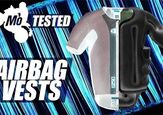


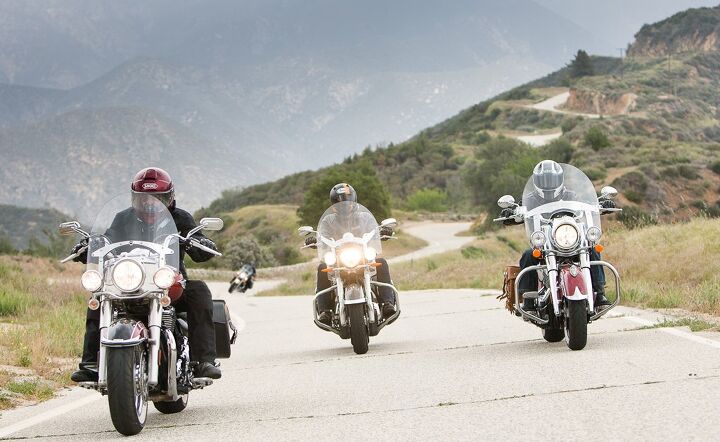
























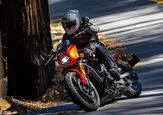
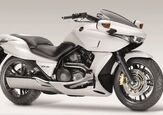
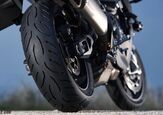
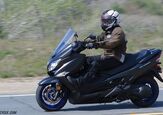
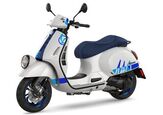
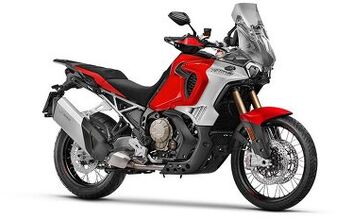
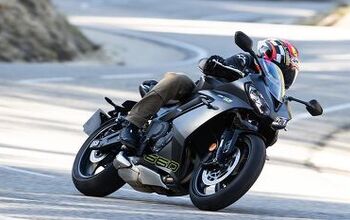
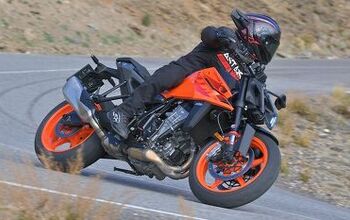
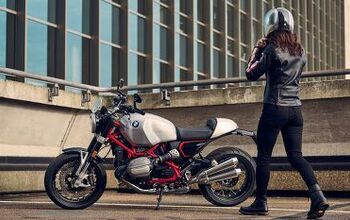
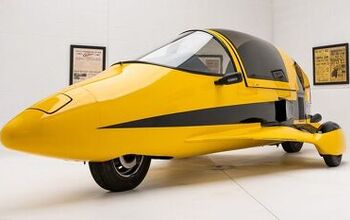

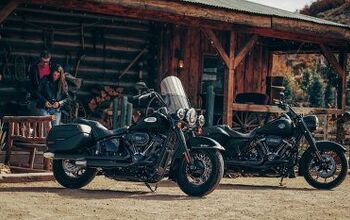
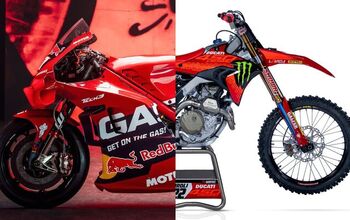
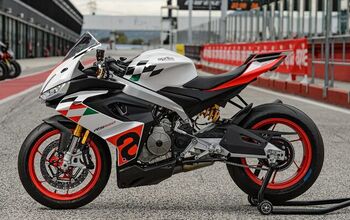
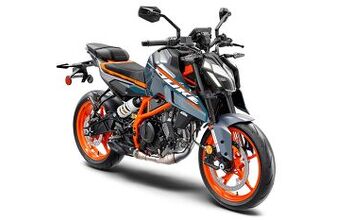
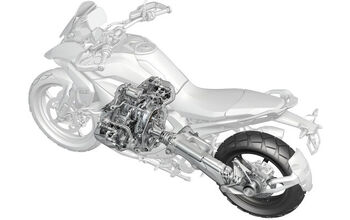
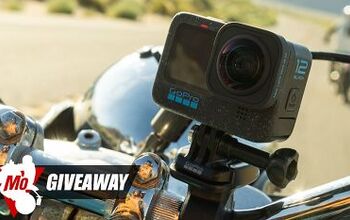
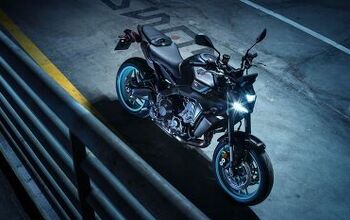
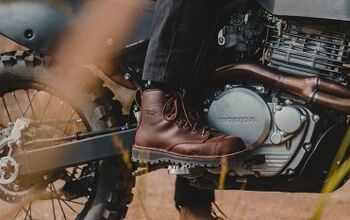

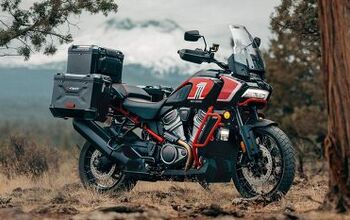
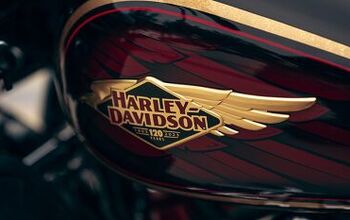

Comments
Join the conversation
I really wonder why the Yamaha Stratoliner wasn't included in this competition?
As an owner I'm thinking it would have blown them all away.
Cross Roads Owner Advice:
1. Buy it with waterproof hard bags instead, it's an option.
2. Buy it with way more attractive forged bars, another option.
3. Victory Lowers will eliminate all buffeting.
4. Low version of windshield is perfect, choose that one instead.